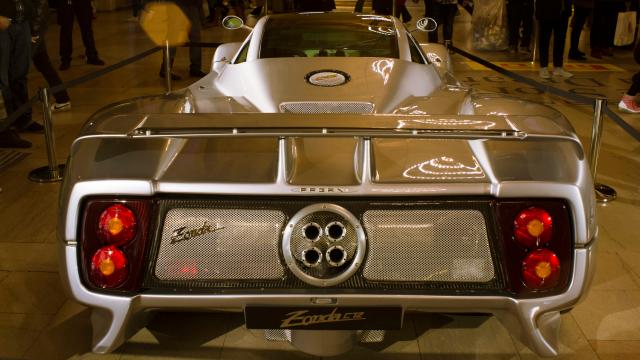I was just wasting a good amount of my afternoon reading about the Orca C113. Not familiar with it? Don’t feel bad, there’s a reason for that.
The Orca C113, detailed and hyped on this classic Supercars profile, was going to be one of the fastest cars in the world, the product of a composites specialist René Beck, himself from the small European principality of Liechtenstein, his company based out of bordering Switzerland. First shown in 2001, then again in 2003, and then 2005, the car was supposed to be production-ready, and a contender for fastest car in the world. It looked like a Le Mans car with a licence plate and soon traded a Volvo inline-five engine for claims of a twin-turbo MTM-tuned Audi V8, as detailed in a bit of a post-mortem on a local Swiss news site. If you never saw the car, you’d wonder why, in a pre-Recession era, René Beck’s car went nowhere. That is, if you never saw the car.
I will always be personally charmed by the audacity of the Orca, its styling an assault on the eyes as much as it is rear tires were an assault on the road. Orca claimed it would limit production to 99 examples. I can’t find pictures of more than two.
This is what’s on my mind as I looked over Pagani Zonda 001. This is the first Zonda, also a brainchild of a single composites expert, working not far away in northern Italy. Recently restored by the company, it was on display in Grand Central here in New York along with a handful of other more baroque Paganis through its history.
It’s the look of the thing that caught me over and over as I walked around the car. The original Zonda, called the C12, is not all that different from the Orca in ethos. Even the names fit the same mould. The C113 name of the Orca calls back to how Mercedes named its experimental designs, the C111 record car of the late 1960s and early 1970s and the C112 not-quite supercar of the early 1990s. C12 for the Zonda recalls Mercedes’ actual Le Mans racing program in the Group C era, a line rounding out with the Sauber-Mercedes C9 and then the Mercedes C11, if you ignore the short-lived C291 as Mercedes probably wishes you would.
In terms of specifications, there’s not a ton to distance the Pagani from other startup supercars of the day. Pagani only claimed 450 horsepower for this early car, and 435 lb-ft of torque, pushing 1.25 tonnes around, as the display sign next to the car detailed. It only rides on 18s, with a meaty 40-profile tire up front and a 35-profile tire at the rear. Nice. The Orca claimed much higher specs, with a mythical super-super Orca called the SC7 hitting something in the 800 horsepower range and just moving 850 kilograms up those Swiss mountains.
The difference between the two, at least the most obvious one, is that the Pagani is a singular work of design genius. It is spectacular to behold, over the top and restrained at the same time. Next to other Paganis it looks simple, but it’s covered in scoops and vents, the interior looks lifted from an auto show concept, complete with air vents rising like periscopes and leather stretched in almost cartoonish shapes. One moment it seems low-key, then you see the four exhausts bundled out at the back “like something James Bond would drive” an older woman standing next to me couldn’t help but blurt out.
This is all to say Pagani was not unique in wanting to be a boutique supercar builder in the pre-Recession boom years. But seeing the car in person, after all this time, confirms as easily enough why Pagani survived when others fell to the wayside.
